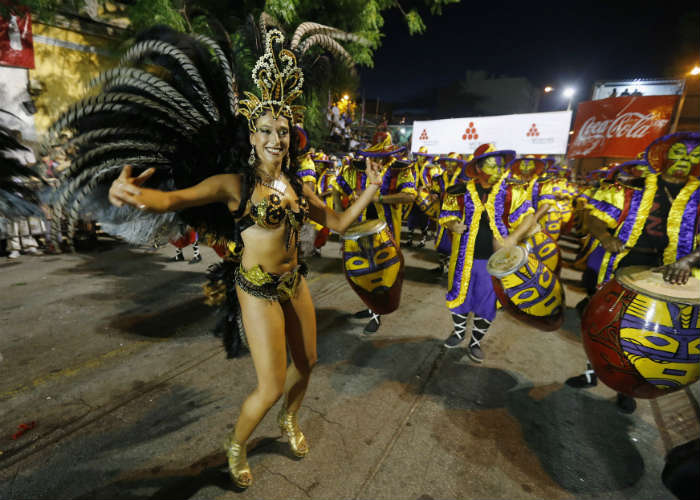Like every year, hundreds of costumed drummers and dancers kicked off the Uruguayan Carnival "Las Llamadas". Thousands of people gathered at the capital's Barrio Sur to witness the festivities.
This popular festival is celebrated every year in the country from mid-January to late February. The Carnival - associated with candombe, Murga and tablados - has evolved into a dance parade in which different comparsas play the drums and dance to the music.
The origin of the Carnival dates back to the initial days of the slave trade in Montevideo in 1750. The West African slaves, who lost their sense of identity in a new land, started this festival. Taking permission from their masters, they used to gather in the houses in Montevideo, where they tried to get in touch with their origins.
On the occasion, the slaves used to evoke the music and the memory of their homeland. Their music and dance style later came to be known as candombe. This festival can last up to 40 days and involves a series of cultural events such as dance parades, street stages and an artistic contest.
Las Llamadas is a Spanish term, which means "the Calls". After slavery was abolished, the Uruguayan citizens began to form new groups referred to as "Negro neighbourhoods"; and Sur and Palermo stand out among these groups.
Comparsas are a group of persons who sing and dance to candombe music. The word luvelos refers to the white people who used to dress as black people so as to take part in the dance parades during colonial times in Spain.


















